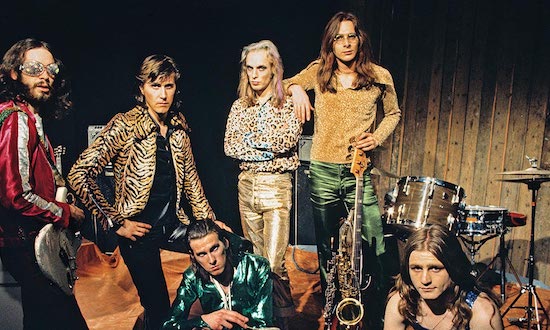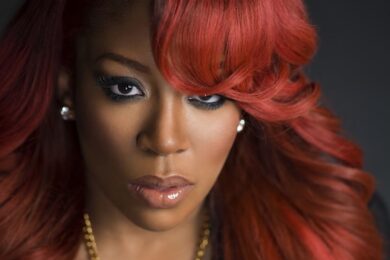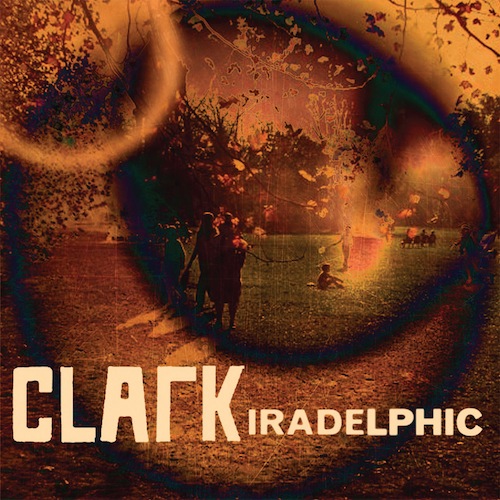Before you read on, we have a favour to ask of you. If you enjoy this feature and are currently OK for money, can you consider sparing us the price of a pint or a couple of cups of fancy coffee. A rise in donations is the only way tQ will survive the current pandemic. Thanks for reading, and best wishes to you and yours.
Solitude is at the heart of Roxy Music’s most cherished album For Your Pleasure. It’s in the thermoplastic, lonely eroticism of ‘In Every Dream Home A Heartache’ and the suicide note of ‘Strictly Confidential’. ‘Do The Strand’ too, was named after a stylish 1959 cigarette ad that celebrated lonerism with the strapline: “You’re never alone with a Strand”. Bryan Ferry, like the handsome, behatted chap stealing a smoke on a slick wet London street – a scene that could have been lifted from The Third Man or something from the French new wave – is an outlier like the dapper gent in the ad too, a smouldering, lone dandy, determined to do things his own way. Despite its visual elegance, the campaign was a dud with Strand cigarettes withdrawn from sale in 1960.
Roxy Music was never a solo project, although the more it progressed, the more it may as well have been. In the early days it was six men; five if you take into account how disposable the bass players were; and right at the beginning it was all about two men, both called Bryan/Brian with a slightly different spelling, competing to be the cynosure of the group. To paraphrase their glam rock contemporaries Sparks, this band wasn’t big enough for the both of them.
Roxy parted ways with effervescent sonic sideman Brian Eno in 1973 when too much attention was being rerouted away from the frontman. Conventional wisdom amongst the cool kids is that thereafter the band was never the same. Ferry hired fellow Geordie Eddie Jobson on keyboards and violin, a musician without an ounce of the flounce or the flair of his predecessor, even if he had the chops. Nominative determinism would suggest Jobson was a jobbing ‘yes’ man whereas Eno, with his exotic eleven names, was an unpredictable visionary. He was an imputable visionary in actuality, and while it’s subjective, Eno just wasn’t that important to the direction of the band once they’d explored everywhere they could go with him on For Your Pleasure.
Eno’s later innovations, his Cageian approach to music, his refocusing on the act of listening and his coining and marketing of ambient are all important to the story of modern music, but this left field approach had no place in Roxy Music going forward. What’s more, Roxy already had one visionary, and Eno was becoming a distraction in the press, on stage and in the presentation of the aesthetic as Ferry saw it. As magnificent as For Your Pleasure is, and as much as I admire Eno, Roxy Music was just getting started when he departed from the band, whatever the received wisdom is. For all of Eno’s delicious electronic squiggles and his righteous plumed attire, it was ultimately a better band without him in it.
Roxy Music was formed in 1970 although the story really begins in Newcastle at the local art school in 1964, when Ferry was taught for one year by Richard Hamilton, one of the leading lights in the British Pop Art movement from its earliest days. It was a propitious alliance of pupil and lecturer, and Hamilton later joked that Ferry was his “greatest creation”. Pauline Boty called Pop Art the “nostalgia of now”, reframing celebrity and commercial culture in a way that looks quaint compared to the more heavy hitting, brand driven US version that was to follow. To Hamilton, Pop Art was “the son of Dada”, and his best known picture, 1953’s Just What Is It About Today’s Homes That Makes Them So Different, So Appealing? isn’t a million miles away from the cut-up montages of Hannah Hoch made in Weimar Germany 35 years earlier. The subversive message of the artwork and its sheer stylistic audacity had an effect on Ferry, both directly and indirectly.
It’s clearly an influence on the band’s classic ‘In Every Dream Home A Heartache’, though Ferry takes Hamilton’s commentary on rising consumerism to somewhere dark and perverse. The protagonist’s enjoyment of the home as a Corbusian machine for modern living becomes a cold and loveless place where sexual gratification is mechanical, carried out with a plastic, personified commodity. It’s all about tension and release, and few pieces of music outside of Carl Orff’s ‘Carmina Burana’ or, say, Josh Wink’s ‘Higher State of Consciousness’, come quite so hard at the denouement. The women too in Roxy’s world are commodified just as they are in Pop Art; idealised, fleshy, sexualised, staring out from the album covers looking statuesque to the point of being almost fascistic. They’re hyperreal phantasms rather than actual women. They advertise an idealised world that at this point Ferry is still only looking in on from the outside window.
While attending art school, Ferry, like Bowie, David Byrne, MIA etc, etc, saw the potential of music to disseminate ideas. The only problem was that he couldn’t play anything at the time. “It’s very difficult to write songs when you’re only a singer because all you’ve got is the melody and it’s easy to forget,” Ferry, who’d previously fronted a band called the Gas Board while still in Newcastle, told Melody Maker in 1972. He’d enrolled in piano lessons to learn basic chord structures to sing his melodies over. “When you play something, you learn the songs’ chord structure, so when you wake up the next morning you can still remember it”.
The early songs of Roxy Music were simplistic in structure, while the band – with King Crimson’s recently cut adrift Peter Sinfield producing – attempted to make up for any shortcomings by playing the hell out of each track on the debut record. ‘Remake / Remodel’, ‘2HB’ and ‘Sea Breezes’ were all written in one period in quick succession in late 1970 after Ferry had lost his job teaching ceramics at a girl’s school in Hammersmith. The first of these – Roxy’s early calling card ‘Remake / Remodel’ – almost falls down under the weight of everyone improvising but somehow gets away with it. The trashiness adds to its charm. The band’s presentation would only get slicker from here on in.
‘Ladytron’, which follows, is transcendent in comparison, aligning old (Andy Mackay’s oboe) with new (Eno’s intergalactic sounds). ‘Ladytron’ is indicative of the transformative power of Roxy Music, from aural to visual, just as Ferry is beginning to get his act together as a songwriter. He once quipped that where other bands might trash a hotel room, Roxy would seek to redecorate it, and it’s this visual aspect that made his songs distinctive. “When I started writing music I found it was like Pop Art,” Ferry told Nick Kent at NME in 72. “I was using images… like in the lyrics, throwaway cliches and amusing phrases that you found in magazines or used in everyday speech… stylistic juxtapositions. But you have to do it properly, you can’t just throw them together at random”.
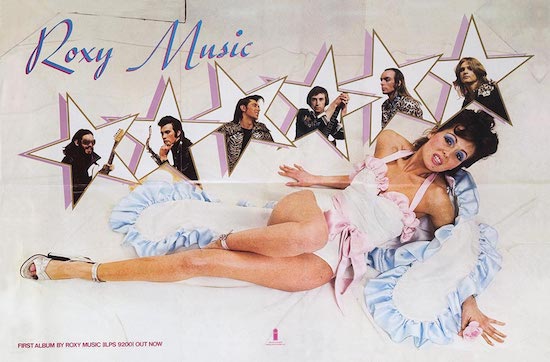
The band was full of sonic juxtapositions too, though the personnel were thrown together at random. He advertised for a keyboard player but saxophonist and oboist Mackay showed up instead. Mackay also had a VCS3 synthesizer, and he bumped into his old friend Eno on the tube and decided to introduce him to Ferry. Eno had an art school background and was interested in musique concrète and tape looping. It was decided that he could operate the synthesiser and he brought his Revox reel-to-reel along. Paul Thompson answered an ad for a “wonderful drummer”, which he certainly was, and Davy O’List from The Nice was the “tricky dick lead guitarist” they also advertised for, at least at first. Phil Manzanera, who replaced him, had auditioned at the same time as O’List and didn’t get the gig, though he learnt all of the material just in case and then waited patiently for his moment. Bassist Graham Simpson, a founder member, was dismissed in 1972 mid-nervous breakdown and a Tap-esque sequence of jobbing members formed a temporary rhythm section with Thompson, including John "Gus" Gustafson, who played that memorable groove on ‘Love Is The Drug’. Ferry was grabbing musicians as they presented themselves, like Hoch or Hamilton, cutting images from a newspaper and throwing them together.
The beginning of the 1970s also coincided with a 1950’s revival, a shock to many that retro fads were so quickly consuming and repurposing modern history, reviving eras that were well within living memory. Teddy boys and Brylcreem made a resurgence after barely being forgotten about, and soon there were stage musicals like Grease and TV shows like Happy Days to reflect the beige and cosy decade of domesticity and flick knives, in opposition to the free love and radicalism of the late 60s. Charles Shaar Murray once called Roxy Music a “boppin’ high school hop band of the future”, and its this juxtaposition that made them interesting in the first place.
That said, the experimentalism of the first album on tracks like ‘The Bob (Medley)’ and ‘Chance Meeting’ fail dismally compared to the majestic straight ahead pop of ‘Virginia Plain’, recorded just a few months after the album came out. In fact, the whole second side of the first album is more or less a busted flush, while ‘Virginia Plain’ is the apotheosis of where Ferry had been heading. It’s three minutes of pop alchemy, despite not having a real chorus and featuring an oboe solo, based on a mixed media collage he did at college with a pin-up girl riding a giant cigarette packet (Virginia Plain was the name of the brand). The song reached no.4 in the charts, much to the annoyance of the pop establishment.
Roxy Music’s immediate success had come too easily. They’d not paid their dues – something that was very important at the time, though seems baffling to us now. Marc Bolan had done the circuit to death as Tyrannosaurus Rex before changing the sound and shortening the name to T.Rex; Lou Reed had been in the Velvet Underground and the gutter, and David Bowie had tried various outlandish guises and drifted in and out of obscurity before superstardom with his alien creation Ziggy Stardust.
If Bowie’s ‘Starman’ appearance on Top Of The Pops had seen paterfamilias kicking in their tellies in outrage, then Roxy’s appearance on The Old Grey Whistle Test in 1972 was just as preturbing for the beardy pseuds who saw denim-wearing and authenticity as synonymous. They were confronted instead with spangly attire, eyeshadow and leopard skin, bug-eyed wraparounds, otherworldly oboe solos and a Jovian sound technician teasing radiophonic noises from a bank of switches and knobs, twiddling and manipulating and warping in gold lamé gloves. Presenter Bob Harris took a dim view of these vampish, computerised dilettantes who weren’t playing real instruments and he made some derogatory comments about them being “arrogant” under his beard.
Roxy Music’s second appearance in 1973 at the behest of producer Richard Williams prompted “Whispering” Bob to fully break rank live on air. He’d seen enough: “Roxy Music’s music is well-known and I’m saying very little more on that subject tonight,” he demurred to camera, “except to say that nothing they’ve done meanwhile has changed the opinion I expressed when the group appeared on this programme during the last series.” Williams, who also wrote for Melody Maker, commented with some amusement about the “countless hard-gigging pros swearing their heads off at the way Roxy has taken off… Dues paying, as far as Roxy is concerned, has been virtually eliminated by a combination of imaginative excellence and intelligent strategy. And these two adjectives – imaginative and intelligent – pretty well sum up where they score over the muddy morass of mediocre pickers truckin’ nightly up and down the M1.”
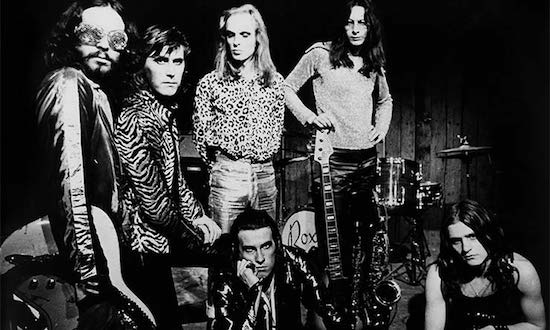
Roxy Music was more of a concept than a band, and it was Ferry’s concept and Ferry’s band. He said he intended to make it in “as civilised a way as possible”. Originally named just Roxy after an old cinema (it could have been the Ritz, Odeon or Savoy, the Empire or Regal), the name sought to project a stateliness – upstanding, imperialist, grand, a little tatterdemalion maybe… As well as mining the 1950s for its sound, Roxy Music was also revisiting the architecture of the 1920s and repurposing it in the visuals. That Art Deco cool is no better exemplified than on the cover of For Your Pleasure, with an impossibly leggy and androgynous Amanda Lear walking with her black panther. Pull the gatefold out and Ferry is on the back cover dressed as a chauffeur, leering slightly and awaiting Lear and her cat to climb into the limo. “We had to get a girl in to pose for the cover of the album,” Eno told Kent, “which I thought was a drag because it’s all becoming too stereotyped.” This offhand comment would supposedly become the source of Ferry’s new passive aggressive attitude towards his bandmate.
Music journalist Martin Hayman noted that Ferry’s “combination of vanity and self-deprecation made him such a sought-after interviewee – a man who produces a quote a minute.” The other Brian too gave good quote, a fact that hadn’t escaped Ferry. Bryan and Brian were conducting their interviews separately and there was clearly animosity. Ferry has since admitted to feelings of jealousy regarding all the attention Eno was getting. Even the fans split into two distinct camps at gigs, congregating under their favourite Bryan/Brian. It was obvious one of them was heading for the door.
“Bryan Ferry takes one end of the stage,” said Steve Peacock in Sounds, “dark colours, wide shoulders, and traditional rock and roller’s mannerisms – facing outwards over his keyboards and occasionally dancing out into the centre of the stage. The other side belongs to Eno and his table of devices – he looks brighter, with streaked blond hair, wide braces, a hunched stance, and a rather seedier image. The band are between them both in position and appearance.’
Eno presented a new type of musician to the world, one who “replaces judgement with skill”; or in other words, one who uses intuition rather than being able to play in the conventional sense. Eno wanted to pursue the sonic jams of ‘The Bogus Man’, the opaque, elongated strangeness of the title track; and even the bad harmonica of ‘Grey Lagoons’, and he considered the formed, functional, figurative songwriting of side one as too safe. Eno, sitting with the experienced producer Chris Thomas, began to discover the studio as a place where you could experiment and create and slip down musical avenues that had never been explored before, a place where the musician as a means of production was becoming less integral to the process. The technology was opening up, meaning things could be achieved that were impossible only a few years ago. At this juncture, a schism would be the best news for all concerned, a textbook case of creative differences getting in the way. David Shepherd in On Some Faraway Beach: The Life and Times of Brian Eno wrote: “Eno was genuinely concerned that Roxy’s art-rock credentials – the sine qua non of his involvement with the band in the first place – were being compromised by Ferry’s increasing partiality for Tin Pan Alley classicism. Eno shivered at murmurings from EG about Ferry recording a solo album of standards and show tunes”. The vainglorious Eno, rather like Satan in heaven, was cast out and forced to walk the earth producing U2 and Coldplay for obscene amounts of money for the rest of eternity.
Concerns about Ferry’s show tunes are one thing (and we all share those same reservations), but as a songwriter he truly began to hit his stride come 1973’s Stranded, and the band doesn’t sound half bad either. Take ‘Amazona’, a Manzenera-led track that’s so funky it was sampled by Ice-T on ‘That’s How I’m Livin’ (On The Rox remix)’ in 1993. ‘Mother Of Pearl’ is a collaborative effort with the maligned Jobson, a song of two halves, featuring a serenade to the iridescent nacre in a lyrical tapestry of poetry and Nietzsche’s Thus Spake Zarathustra. Ferry showed up at the studio, unfurled his scroll, and recorded the completed song that had only been an instrumental up to that point, much to Chris Thomas’ amazement.
Perhaps the piece-de-resistance is ‘A Song For Europe’, a melancholy and grandiloquent ode to tristesse with Europe’s hot spots as mise-en-scene: empty cafes, the shadow of Notre Dame and Gondolas gliding through silken waters. It’s daring, kitschy and sentimental, and its this audaciousness that elevates it to extraordinary. The conclusion is sung in French and Latin, and it’s a song of such beautiful melodrama that German director Rainer Werner Fassbinder used it for a memorable scene in In A Year Of 13 Moons, where recently transitioned Elvira – played by the late, great Volker Spengler – has a breakdown by the fruit machines in a video arcade. It’s such a powerful cinematic moment that any cheesiness is forgiven, and let’s face it, Ferry could have opened a whole fromagery with ‘A Song For Europe’.
And let’s not forget ‘Street Life’, a rambunctious opener that grabs the attention in much the same way as all the openers on the first five Roxy albums. It’s a style of song Ferry calls a “dancer”, sounding like an upper class fuddy-duddy in the process. The opener on the previous album was ‘Do The Strand’, a made-up dandy dance craze with some cunning joue de mots involving King Louis XVI (“Louis seize he prefers laissez-faire le Strand”).

The opener on Country Life, ‘The Thrill of It All’, is an exhilarating six and a half minutes that goes off like a rocket, with Ferry sliding in and out of the blue notes with one of his finest career vocal performances. It may appear more straightforward than if Eno was on board on a first listen, but closer inspection, preferably with headphones, reveals there’s much going on including strings, jazzy schronking and Paul Thompson going pell mell on the toms.
Country Life is still Ferry fantasising about the highlife, but as a now eligible, country house-owning, supermodel-dating, loaded rock singer, he’s beginning to make the journey across the floor to join a party on the other side of the building. There’s even a cheeky exploration of fringe ideologies on ‘Bitter Sweet’, a Weillian cabaret number sung partially in German. It’s decadent and slightly sinister, and would have been more forbidding still performed on the Country Life tour with Ferry in riding breeches and jackboots marching across the stage in front of an “RM” logo accentuated with a pair of eagle’s wings. If Roxy Music, like Bowie a few years later, were flirting with the aesthetics of the fascist Third Reich, on the plus side, they were also laying the foundations for subsequent musical movements en maquillage with ‘Out Of The Blue’. The song is at the heart of Japan’s 1979 reinvention, which would itself become the basis of the New Romantic scene, especially in the case of Duran Duran.
The fifth album Siren, which features Jerry Hall on all fours on some sedimentary coastal rocks covered in molluscs and silage, was Roxy Music’s most acclaimed record on its release, though Eno’s myth hadn’t been established by then and, to be fair, the rock press was more conservative and could become irascible if exposed to too many squiggles and sounds of an “inauthentic” nature. Nevertheless, many journalists praised the 1975 record for its consistency and cohesion. To modern ears, the production is less exuberant than the previous offerings, but its still teeming with excellent tunes, not least of all ‘Love Is The Drug’, another banger of an opener to add to the collection. ‘Whirlwind’ is suitably windswept, fierce and swirly and ‘Both Ends Burning’ is another proto-New Romantic jewel that, if there was any doubt already, establishes them firmly as progenitors of that pop scene.
Following a four year hiatus, Roxy Music returned in 1979 and went onto huge commercial success with songs like ‘Dance Away’ and later ‘Avalon’, reflecting a Gatsbian demimonde of cocaine and models with double barrel names you’ve never heard of. By the time Ferry brings Roxy Music II to life, he’s calling all the shots. He’s not only rock aristocracy, he’s assumed the mantle of gentry too, just without the title or breeding. The “orchid born on a coaltip” has a different worldview – he’s on the inside, looking out now – but this detachment from the hoi polloi is surprisingly equitable. Couples from Middle England are happy to tug their forelocks at Bry and make whoopee to his smooth, slightly empty crooning, blaring out of the Amstrad hifi in the corner. It’s a long way from Ferry’s Pop Art roots, with Rhett Davies, Bob Clearmountain and a whole ensemble cast of session musicians finely tuning everything so nothing creaks.
Fast forward to 2010, and the surviving members of the original Roxy very nearly worked together again on Olympia under their collective band name, though at some point in the process, Ferry took his ball back and it instead became his 13th solo album. Andy Mackay, Phil Manzanera and Brian Eno can be heard on one of Ferry’s finest, most elegant records, but he also invites a celebrity cast seemingly of thousands to the party: Nile Rodgers, David Gilmour, Chris Spedding and Johnny Greenwood are on guitars, among others; Kate Moss’s upside down cheekbones make a starring appearance on the cover in homage to his former band, and Flea, Mani and Andy Cato are all on bass throughout – expertly mixed together by Rhett Davies.
According to Ferry, opener ‘You Can Dance’ started out almost as a rockabilly number, a clue perhaps that he was going for another ‘dancer’ to kick things off, though in the end it becomes slick, homogenised, classic post-Roxy Ferry teased to within an inch of its life by Davies. In the chorus, Ferry sings about hitchhiking into Paris, a spontaneous and reckless plan of action you can’t imagine the singer ever pursued in real life. Musically it clearly echoes Ferry in his commercial pomp, but it’s smarter and more vivid than pastiche, and free from the bloaty excesses that marked Roxy mark II.
It’s really rather good in other words, though one can’t help imagining how it might have turned out with the original band having more say in their contributions than what eventually came to light. But then Bryan Ferry never was very democratic. And he always appeared to enjoy solitude. Like the Manet painting Olympia is named after, he sits prettily in the foreground, almost alone. And then, after some careful examination, you notice the crepuscular figure in the background holding some flowers and attending to the needs of the subject.

